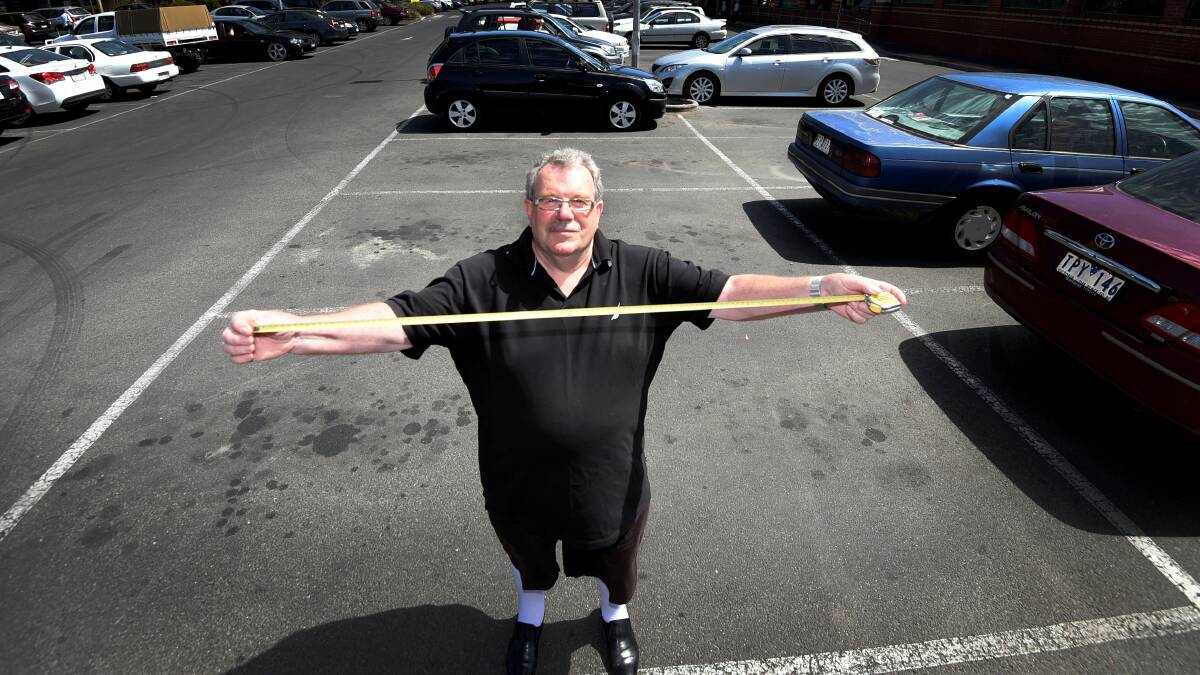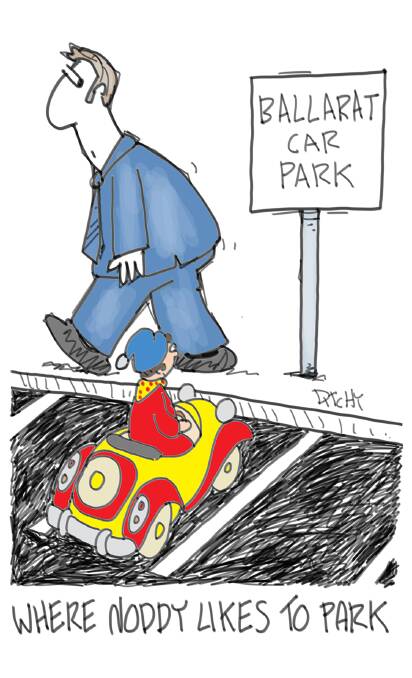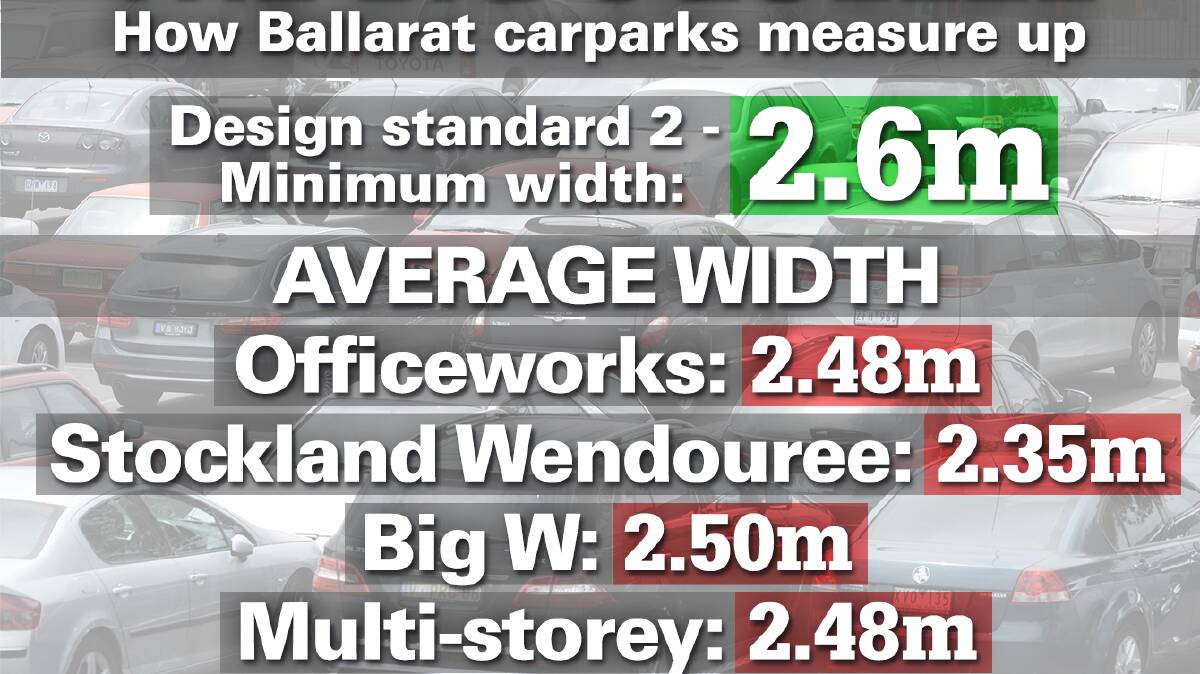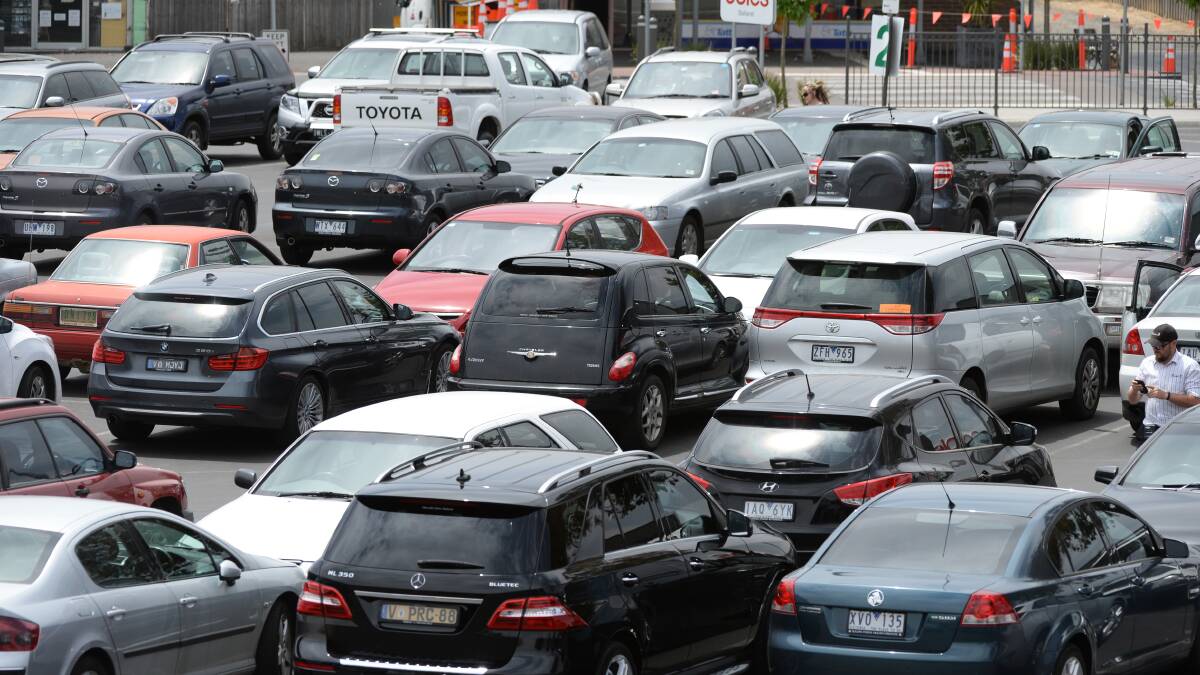The issue of Ballarat’s tight car parks has flared again, with concerns arising over spaces in several lots that fail to meet minimum size guidelines.
Subscribe now for unlimited access.
$0/
(min cost $0)
or signup to continue reading
Measurements taken by The Courier on several well-used car parks show that many spaces do not meet the requirements generally accepted across the state through the Australian Standards and Planning Scheme Requirements.
Accepted length and width of a space is often determined on the width of the accessway point, with the bare minimum for width generally set at 2.6 metres and length usually at 4.9 metres.
However, of the 22 car parks measured across Officeworks, Stockland Wendouree, Big W and Central Square multi-storey lots, none reached the guidelines for width, while several spaces were marked well-short for length.
Worst for width were spaces at Stockland Wendouree, with some measuring just over 2.2 metres wide. Of the seven parks measured on the site, the average width was just 2.35 metres.
The other three lots averaged around 2.50 metres, however, Officeworks spaces proved to be alarmingly short, with spaces measuring just over 4.6 metres from kerb to the inside of the back line (excluding overhang allowance).
Some parks in the Central Square multi-storey measured just 4.10 metres from the bar-curb to the inside of the end line, however, significant overhang is also allowed for the front of vehicles.
Parks at the Big W site ranged in length from 4.3 to 4.9 metres.
In response to The Courier last July, City of Ballarat general manager of city infrastructure Eric Braslis said car parks at Big W, Stockland Wendouree, Wendouree train station, Ballarat train station, Coles Bakery Hill and the Central Square multi-storey car park were privately owned and out of the council’s control.
However, in a written response to The Courier earlier this week, Ballarat’s general manager (of) city services Terry Demeo said the approval of private development car parks is assessed through the Ballarat Planning Scheme – effectively overruling Australian standard guidelines.
“Off-street car parking proposals associated with private developments are assessed using the Ballarat Planning Scheme, which takes precedence over the relevant Australian Standards,” Mr Demeo said.
“On-street car parking design and provision is undertaken using the relevant Australian Standard/s and AustRoads Guidelines,” he added.

Ballarat resident Paul Webster, who has undertaken extensive measurements on eight different local car parks, has had several accidents in lots since returning to Ballarat two years ago.

“Friends have come down from NSW and couldn’t get over the fact that when they park (in Ballarat), their boot has been hanging over the white line – it didn’t even fit in the space,” he said.
“That’s what got me to check the spaces in NSW and they match the (Australian) guidelines, but Ballarat is singing a different tune to the rest of Australia.
“The majority seem to be going 2.5 metres (wide) instead of the 2.6, which is pretty okay. But it’s when you get to the Village (Stockland Wendouree) which gets down to 2.3 metres (that it becomes a problem).”
Mr Webster also outlined the obvious length-shortage in the multi-storey lot, which proves to be problematic when 5.3 metre vehicles such as Ford Ranger cabs or Holden Colorado pickups attempt to park at the site.

“In the multi-level around Christmas time cars were reduced to a single lane to allow other cars through,” he said.
“There were cars parked with their towbars (hanging out into the driving lanes) and they so infringed on the dual access that it was reduced to a single lane.
“You have a 5.3 metre truck (ute) with a towbar and you've only got a 4.8 metres of (space) you’re looking at at least 1.2 metres of impingement on the dual carriageway. It’s crazy.”
A poll asking for Ballarat’s smallest car parks conducted by The Courier last year saw more than 69 per cent of voters nominate the Big W lot as the most problematic site.


